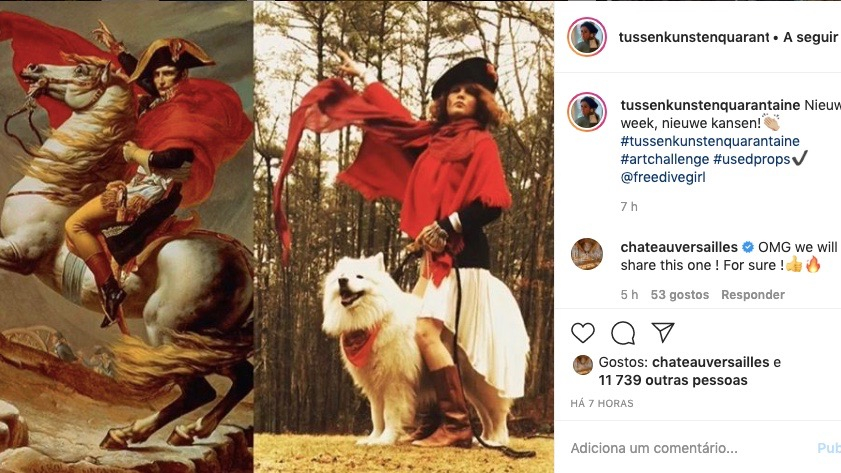
Screenshot of Tussen Kunst & Quarantaine's post on Instagram.
Screenshot of Tussen Kunst & Quarantaine's post on Instagram.
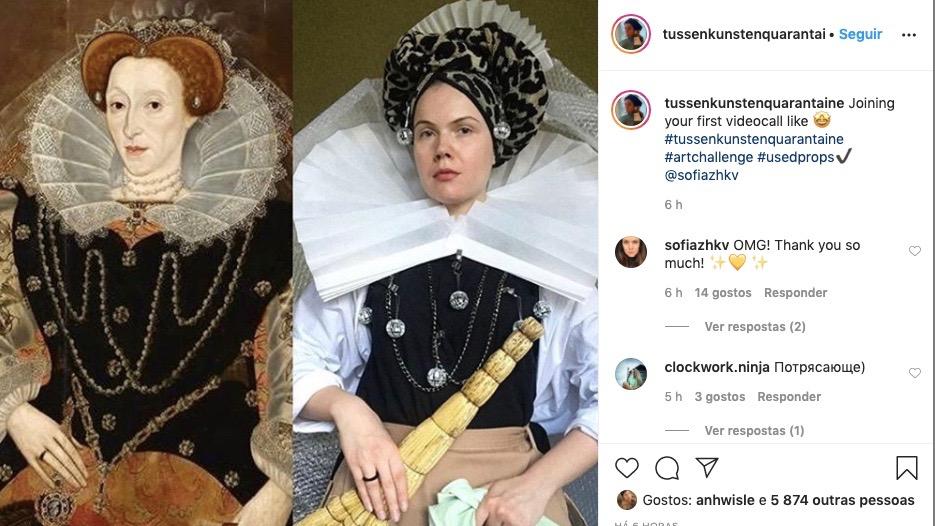
Screenshot of Tussen Kunst & Quarantaine's post on Instagram.
Screenshot of Tussen Kunst & Quarantaine's post on Instagram.
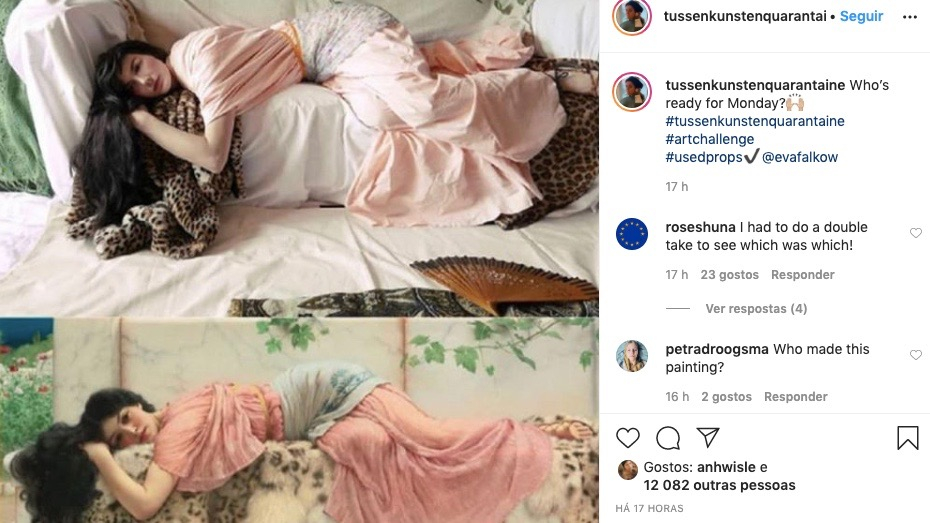
Screenshot of Tussen Kunst & Quarantaine's post on Instagram.
Screenshot of Tussen Kunst & Quarantaine's post on Instagram.

Screenshot of Tussen Kunst & Quarantaine's post on Instagram.
Screenshot of Tussen Kunst & Quarantaine's post on Instagram.
Between the increasing numbers of infections and deaths, some sensationalistic approaches, heart-breaking stories of families separated, and death and life choices with a pending sense of doom looming over everyone's heads, social media can be a source of anxiety during the COVID-19 pandemic. Fortunately, it can also be used as a means to fight isolation, find simple joy and show some artistic creativity.
It all started with the Instagram account Tussen Kunst & Quarantaine, from Dutch meaning "between art and quarantine." The idea is to put the time at home to some good use and reenact pieces of classical artwork.
This challenge made "for everyone at home who needs some relief" is very simple: just choose an artwork, use three items at home to reenact it, and then share it @tussenkunstenquarantaine. The interest around this art at home dare quickly picked up and started trending on social media.
From Chagall to Klimt and Mondrian, or going to more classical choices like Leonardo da Vinci's Mona Lisa or Boticelli's The Birth of Venus, isolation is bringing out the best of creativity in people. Some reenactments even include the most sought out item of the pandemic: toilet paper.
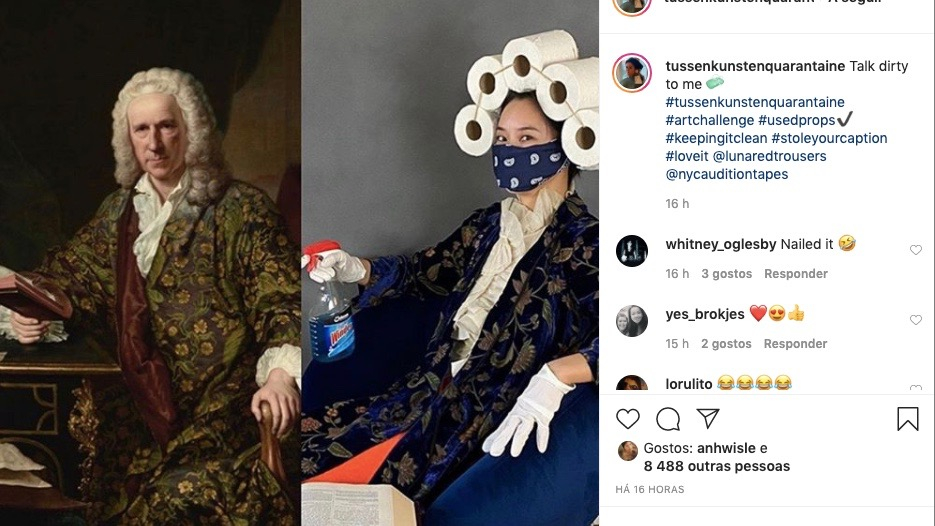
Screenshot of Tussen Kunst & Quarantaine's Instagram post showing an artistic reenactment featuring toilet paper.
Screenshot of Tussen Kunst & Quarantaine's Instagram post showing an artistic reenactment featuring toilet paper.
The page was so well received that it already has 147,000 followers and more than 450 publications. But it didn't stop there, the Rijksmuseum in the Netherlands and the Getty Museum in Los Angeles, U.S., also started their challenges inspired by Tussen Kunst & Quarantaine.
With museums closed due to the COVID-19 spread, this is a good way to keep people engaged and distracted, since visitors are invited to check the online art collections for inspiration.
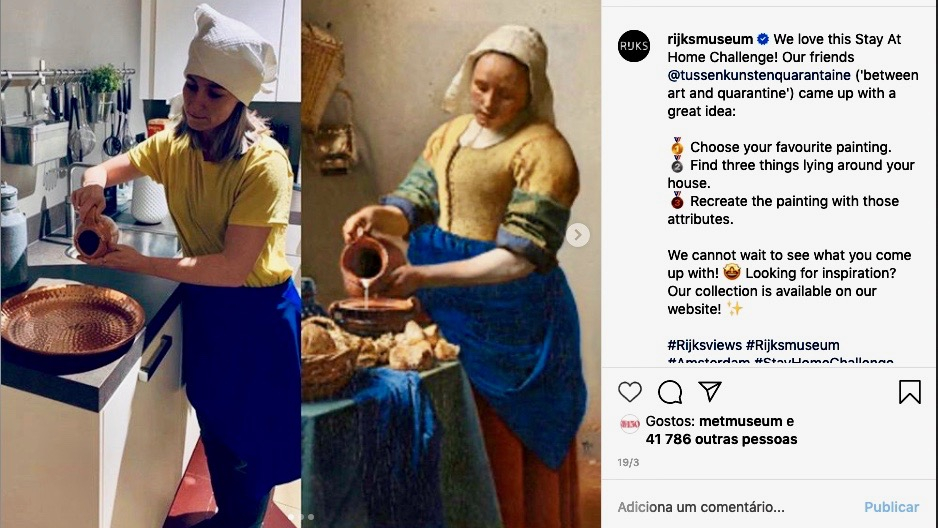
Screenshot of Rijksmuseum's Instagram challenge post.
Screenshot of Rijksmuseum's Instagram challenge post.
Russian 'artisolation'
In Russia, Katerina Brudnaya-Chelyadinova and her husband were at home feeling depressed after three weeks in isolation when they did a reenactment of a Van Gogh painting. After that, friends joined in and then a Facebook group was created. Now, it has more than 248,000 members.
The Van Gogh photo was posted with the tag "izoizolyacia," which translates to artisolation – "izo" is an abbreviation of art lessons in Russian and isolation is "izolyacia."
"I asked my friends to join this challenge: take photos based on great paintings. It's not a new idea, but at that time, I didn't know anything about the Getty Museum flash mob. I did it because back then, my husband and I were at home for more than three weeks, working. I read sad news all day long and got depressed," Katerina Brudnaya-Chelyadinova said to CGTN Digital.

Screenshot of the "izoizolyacia" Facebook post.
Screenshot of the "izoizolyacia" Facebook post.

Screenshot of the "izoizolyacia" Facebook post.
Screenshot of the "izoizolyacia" Facebook post.

Screenshot of the "izoizolyacia" Facebook post.
Screenshot of the "izoizolyacia" Facebook post.

Screenshot of the "izoizolyacia" Facebook post.
Screenshot of the "izoizolyacia" Facebook post.
Her friends joined in and the challenge continued. On March 30, she created a public group on Facebook to showcase all their works, and hundreds of people joined in. Quickly, the number grew even more. "It was a shock to all of us," she said, noting that "in isolation, all these people did creative and fantastic things."
Questioned about the success of this idea, Chelyadinova explained that at present "there are few reasons for joy. People can't meet their friends and relatives."
"Our group is an opportunity to laugh, to show your creativity, and put your brain to work when you come up with your version of the painting," she said.
In the end, the opportunity to go beyond the walls that physically limit so many lives in a fun and light way "makes life a lot easier."